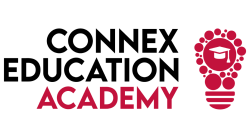The why and how of collaborative learning
I can’t think of a single teacher who doesn’t plan collaborative learning opportunities into their lessons. They have many reasons for doing so – from deepening student engagement to the development of social skills and improved learning outcomes. There is a whole body of research into the impact of effective collaborative learning, with benefits including:
- Increasing student engagement and motivation for learning
- More active participation in class
- Improved problem-solving skills
- Diminishing gaps in attainment and improving outcomes for all
It also resonates with our desire to build empathy and interpersonal understanding. As John Dewey puts it: “In a world that has so largely engaged in a mad and often brutally harsh race for material gain by means of ruthless competition, it behooves the school to make ceaseless and intelligently organized effort to develop above all else the will for co-operation and the spirit which sees in every other individual one who has an equal right to share in the cultural and material fruits of collective human invention, industry, skill and knowledge”
With these high aspirations in mind, how do we make sure our students gain the most out of every collaborative learning opportunity; where we minimise the risks inherent in simply putting children in groups and hoping for the best? If collaborative learning is taken as a specific form of interaction that involves a shared goal, how can we structure our activities to ensure everyone feels equally involved in the task and shares responsibility for its outcome?
Kagan identified four key principles that will help us shape our collaborative activities for maximum impact. His ‘PIES’ acronym stands for:
P = positive interdependence – when students are on the same side, working together to achieve an outcome.
I = individual accountability – when every student has their part to play and can be held responsible for their contribution.
E = equal participation – when all students are equally involved and there is no opportunity to sit back and let others do the work for them.
S = simultaneous interaction – the percentage of students who are taking an active role at any one time.
These are very useful markers to gauge the effectiveness of collaborative activities in a face-to-face lesson. But for the last year our classes have either been remote or socially distanced. How has collaborative learning been facilitated in this ‘new normal’?
Innovation in lockdown
Last March we were all unceremoniously flung into the world of online learning, whether we liked it or not. This meant a rapid upskilling for many of us as we struggled to contemplate the management of remote lessons and the challenge of engaging students who were no longer sitting in front of us. With resilience, imagination and flexibility, we dove into this new world, innovating with new tools and continuing to inspire our children. From live video conferenced lessons we added chat, polls, screen sharing and then braved the ‘breakout room’. We shared and used a host of collaborative apps that were just waiting for us to find them and we prepared ourselves to learn alongside our students. As a result, many classes saw an increase in collaborative opportunities and thrived as more found their voices in the safety of an online space.
However, for some this was not possible – either through a lack of access, a lack of expertise or a lack of support. For these students, lockdown has increased their social isolation and exacerbated gaps in their learning. So, what can we do to re-engage them and overcome any generalised social inertia whilst still building on the lessons we’ve learned in lockdown?
Taking our learning and practice forwards
For many students, the return to school has been an immense relief, giving them back their safe space and friendship groups. Parents I have spoken to state that now they want schools to focus on supporting their children’s social skills and emotional well-being. Which provides us with an exciting challenge ahead – to build back our engaging, challenging and immersive collaborative classrooms, fostering social skills along the way and utilising all the technologies we have got to grips with in lockdown to enrich and extend our practice. What an exciting journey we are on! As we look to the future with optimism, I leave it to Einstein for a closing thought: “The mind that opens to a new idea never returns to its original size.”
Written by guest author and course writer for Thirsty Scholars Partnership, Rachel Tilden Walker. Rachel has written our latest course: Awareness of collaborative learning post pandemic course.

